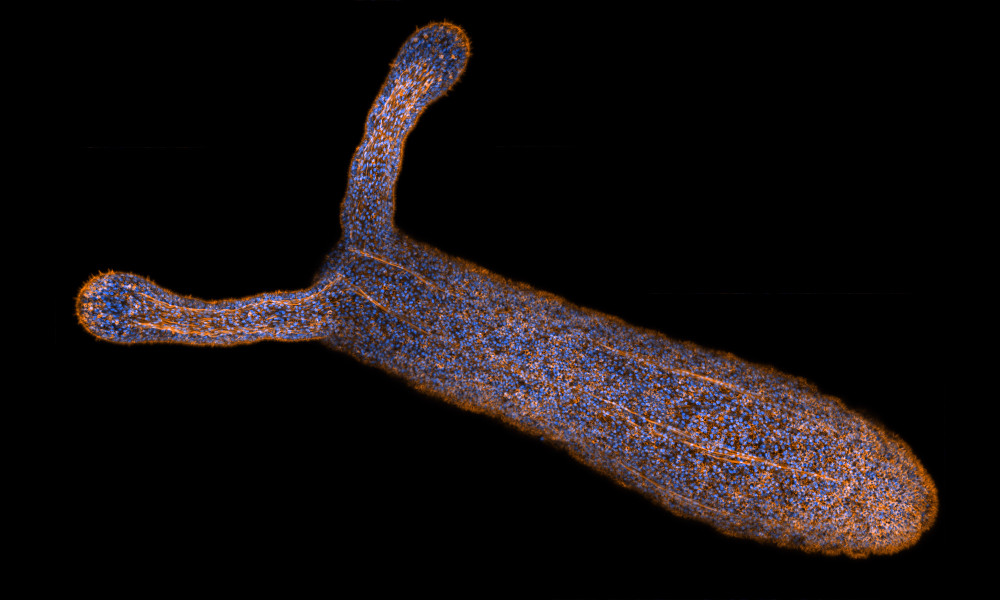
Crazy arms

Sea anemones are amazing creatures. Despite their plant-like appearance and their tendency to remain fixed in one spot, they are actually animals. This image, showing the top part of a Nematostella vectensis polyp in side view, was taken by Anniek Stokkermans, a PhD student in the Ikmi group at EMBL Heidelberg, in cooperation with ZEISS.
The polyp here has already formed four of its characteristic tentacles, two of which are visible in the image. The tentacles are armed with stinging cells and can be retracted inside the body cavity or expanded to catch passing prey. Recently the Ikmi group discovered that the growth of new tentacles happens not only when the sea anemone is a juvenile, but also throughout adulthood. While the first four tentacles develop without the need for food, additional tentacles are only formed if there is enough food available.
This discovery showed that sea anemones are well suited subjects for studies of morphogenesis – the biological process that causes an organism to develop its shape – in the context of organism–environment interactions.
The image was taken with a ZEISS Celldiscoverer 7. Cell nuclei are visible in blue; actin – an important protein in the sea anemone’s muscle cells – in orange.
Credit: Anniek Stokkermans/EMBL/ZEISS
If you have a stunning picture of your science, your lab or your site, you can submit it here.


